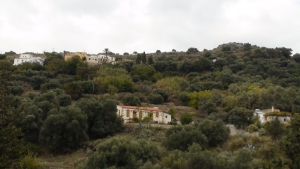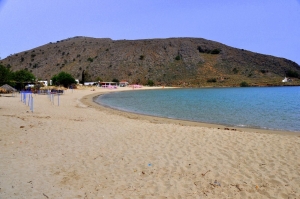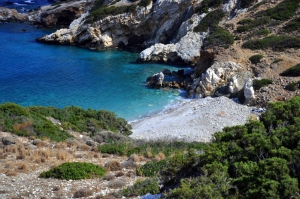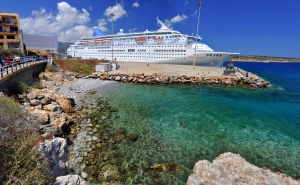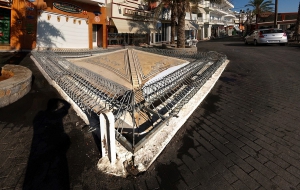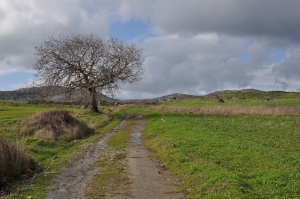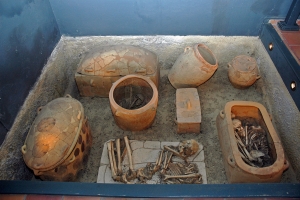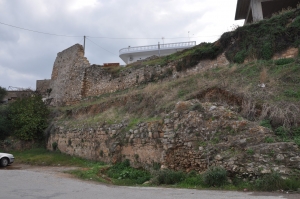The route starts from Kissamos and is the first part of the European E4 trail in Crete. After crossing the villages Kato Palekastro, Korfiano and Grigoriana, we arrive at the ancient city of Polirinia and from there we cross the lush green villages Galouva, Lusakies Zahariana and, finally, Sfinari with the beautiful beach.
Kalivaki is the westernmost beach of Georgioupolis bay, located 38km east of Chania and 21km west of Rethymnon, near the exit of Almyros river which has water all year round lies the nice beach of Kalivaki. It is a beautiful sandy beach and water, due to the rivers is very cold.
It is a small and secluded pebbly beach within a rocky bay. It is totally unorganized without any facilities. There is a nice cave in the sea, however the sea streams gather a lot of rubbish at the wider area. The next beach you'll meet is the beach with the abandoned camping site of Gournia. It is very secluded, but rubbish is very often due to the currents.
Next to the port of Agios Nikolaos you’ll find the tiny pebble beach of Akti Themistokleous street, next to the sculpture of Nikos Koundouros named "The Rape of Europe".
The present town of Hersonissos retains the name of the ancient city of Hersonissos or Heronissos. The town existed since the Minoan period, but flourished after the conquest of Crete by the Romans.
Amari valley is formed between the Mountains Kedros and Psiloritis, at an altitude of 400-500m and is 25km long. It is the natural passage from the north to south Rethymno and Messara Plain. For its central location, it was the theater of several historical events, especially during the Ottoman rule.
The Archaeological Museum of Archanes operates since 1993 in a beautiful neoclassical building that housed the first primary school of Archanes, at the district Tzami.
Kastelli in Kissamos, which in 1966 was renamed to Kissamos, is a small picturesque town built in the gulf of Kissamos or Myrtilos, between the peninsulas of Gramvousa and Spatha. The name derives from the Venetian fortress that was built there, remains of which still exist.





